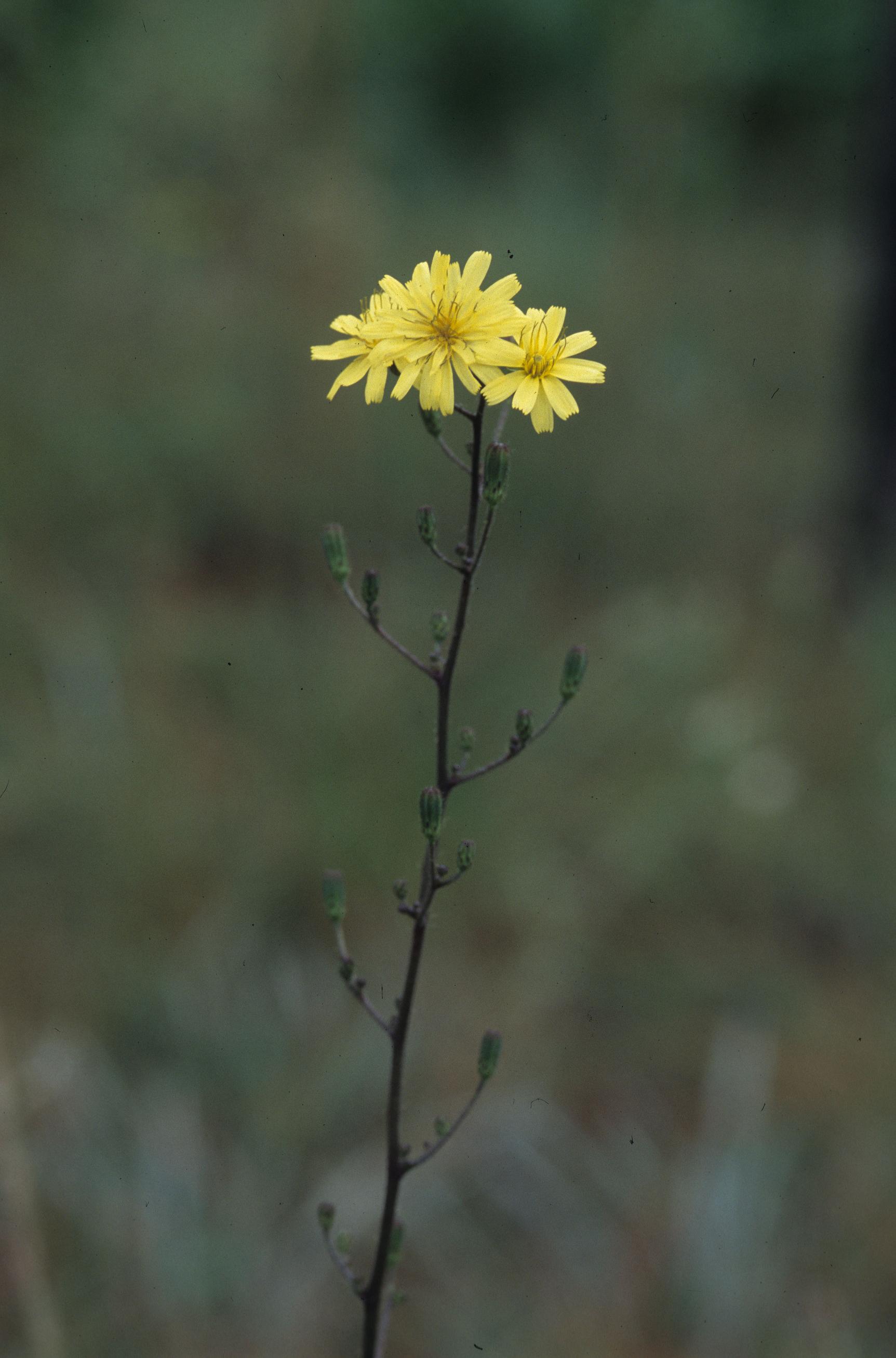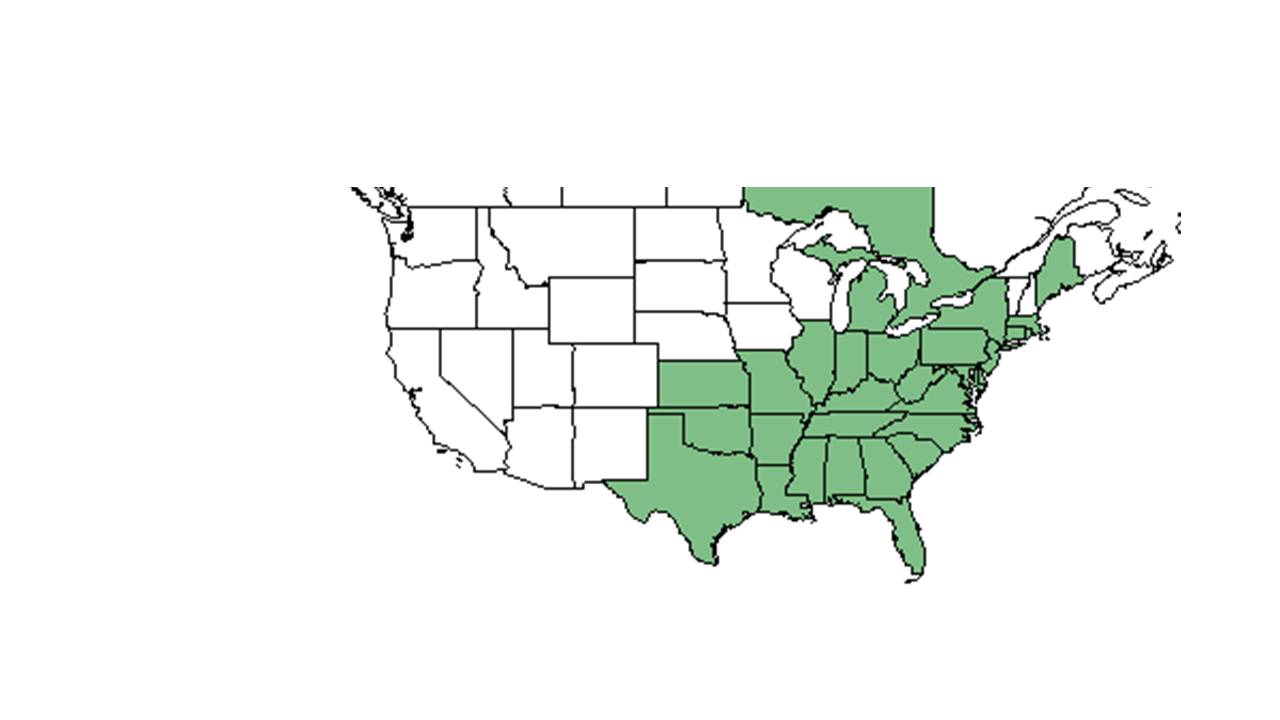Difference between revisions of "Hieracium gronovii"
(→Description) |
Ruthstetler (talk | contribs) (→References and notes) |
||
| Line 47: | Line 47: | ||
==Photo Gallery== | ==Photo Gallery== | ||
==References and notes== | ==References and notes== | ||
| + | Florida State University Robert K. Godfrey Herbarium database. URL: [http://herbarium.bio.fsu.edu http://herbarium.bio.fsu.edu]. Last accessed: June 2014. | ||
| + | |||
| + | Collectors: Loran C. Anderson, Wilson Baker, Robert Blaisdell, Chris Cooksey, George R. Cooley, R. A. Davidson, Richard J. Eaton, J. P. Gillespie, Robert K. Godfrey, S. R. Hill, Richard D. Houk, Ed Keppner, Lisa Keppner, Gary R. Knight, R. Komarek, R. Kral, Robert L. Lazor, Sidney McDaniel, Richard S. Mitchell, John Morrill John B. Nelson, R. A. Norris, R. E. Perdue Jr., James D. Ray Jr., Paul L. Redfearn Jr., Cecil R. Slaughter, Bian Tan, R. F. Thorne, and Jean W. Wooten. | ||
| + | |||
| + | States and Counties: Florida: Alachua, Bay, Calhoun, Clay, Columbia, Dade, Franklin, Gulf, Hernando, Jackson, Jefferson, Leon, Levy, Liberty, Madison, Nassau, Okaloosa, Osceola, Putnam, Santa Rosa, Taylor, and Wakulla. Georgia: Grady and Thomas. | ||
Revision as of 14:11, 20 July 2015
| Hieracium gronovii | |
|---|---|

| |
| Photo was taken by Gil Nelson | |
| Scientific classification | |
| Kingdom: | Plantae |
| Division: | Magnoliophyta - Flowering plants |
| Class: | Magnoliopsida – Dicotyledons |
| Order: | Asterales |
| Family: | Asteraceae ⁄ Compositae |
| Genus: | Hieracium |
| Species: | H. gronovii |
| Binomial name | |
| Hieracium gronovii L. | |

| |
| Natural range of Hieracium gronovii from USDA NRCS Plants Database. | |
Contents
Description
Common Name: queendevil
Distribution
Ecology
Habitat
Phenology
Seed dispersal
Seed bank and germination
Several short-lived perennial forbs also have a seed bank persistent for at least several years.[1]
Fire ecology
Pollination
Mark Deyrup at Archbold Biological Station observed these Hymenoptera species on Hieracium gronovii
Halictidae: Augochloropsis sumptuosa
Halictidae: Halictus poeyi
Halictidae: Lasioglossum coreopsis
Megachilidae: Anthidiellum perplexum
Use by animals
Deyrup observed these bees, Augochloropsis sumptuosa, Dialictus coreopsis, Halictus ligatus, Anthidiellum perplexzcm, Anthidium maculifrons, Megachile breuis pseudobrevis, M. georgica, on H. gronovii.[2]
Diseases and parasites
Conservation and Management
Cultivation and restoration
Photo Gallery
References and notes
Florida State University Robert K. Godfrey Herbarium database. URL: http://herbarium.bio.fsu.edu. Last accessed: June 2014.
Collectors: Loran C. Anderson, Wilson Baker, Robert Blaisdell, Chris Cooksey, George R. Cooley, R. A. Davidson, Richard J. Eaton, J. P. Gillespie, Robert K. Godfrey, S. R. Hill, Richard D. Houk, Ed Keppner, Lisa Keppner, Gary R. Knight, R. Komarek, R. Kral, Robert L. Lazor, Sidney McDaniel, Richard S. Mitchell, John Morrill John B. Nelson, R. A. Norris, R. E. Perdue Jr., James D. Ray Jr., Paul L. Redfearn Jr., Cecil R. Slaughter, Bian Tan, R. F. Thorne, and Jean W. Wooten.
States and Counties: Florida: Alachua, Bay, Calhoun, Clay, Columbia, Dade, Franklin, Gulf, Hernando, Jackson, Jefferson, Leon, Levy, Liberty, Madison, Nassau, Okaloosa, Osceola, Putnam, Santa Rosa, Taylor, and Wakulla. Georgia: Grady and Thomas.
- ↑ Platt, W. J., S. M. Carr, et al. (2006). "Pine savanna overstorey influences on ground-cover biodiversity." Applied Vegetation Science 9: 37-50.
- ↑ Deyrup, M. J. E., and Beth Norden (2002). "The diversity and floral hosts of bees at the Archbold Biological Station, Florida (Hymenoptera: Apoidea)." Insecta mundi 16(1-3).